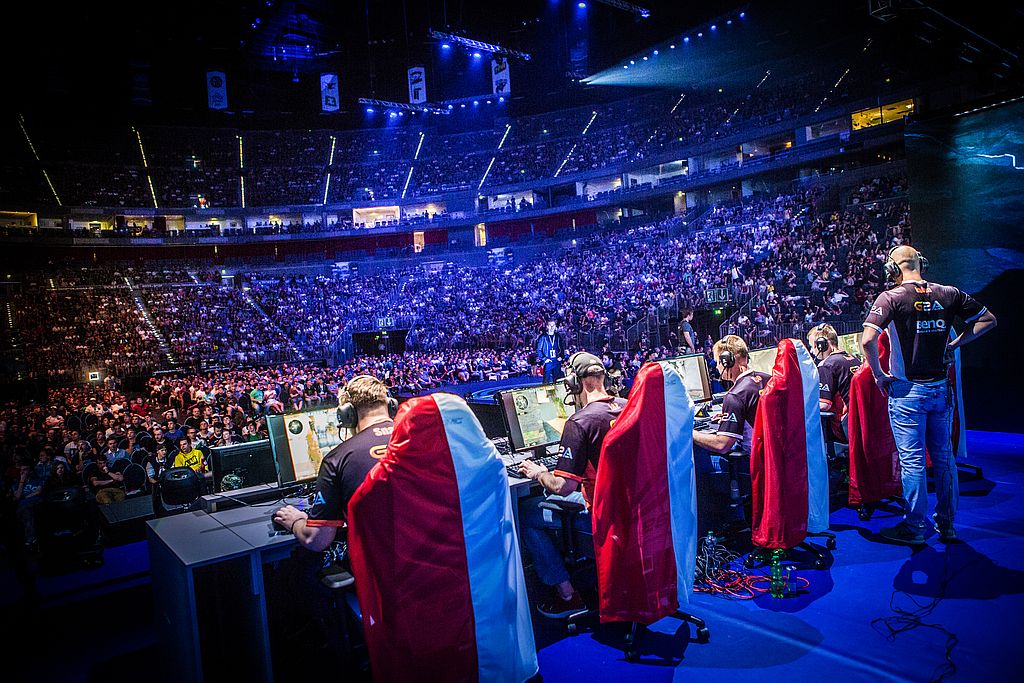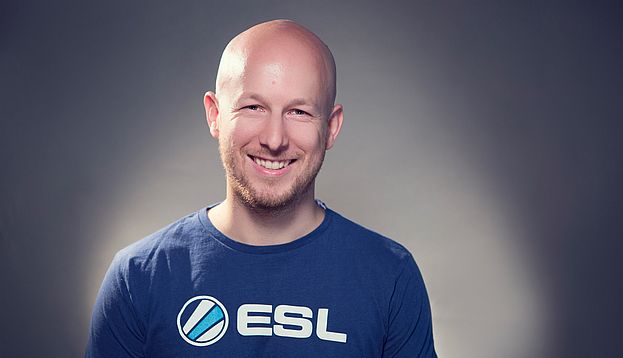ESL One has grown exponentially in just over a year. At the first event at the Commerzbank Arena soccer stadium in Frankfurt, Germany there was only a handful of press as top DotA 2 teams battles for over $200,000 in cash prizes. Fast forward to August 2015 and the LanXess Arena hockey arena in Cologne, Germany and 180 media members were on hand to cover the Counter-Strike: Global Offensive tournament with over $250,000 in cash prizes. The stadium was also nearly sold out with over 11,000 spectators in attendance from around the world.
With ESL One coming to the U.S. Oct. 3-4 at The Theater in Madison Square Garden for a $250,000 DotA 2 tournament, Ulrich Schulze, vice president of Pro Gaming at Turtle Entertainment (which owns ESL One) talks about the place for stadium events in eSports today in this exclusive interview.
What separates ESL One events from anything else that Turtle Entertainment does in eSports?
ESL One is about big stadiums, big arenas, and big crowds. We go to the biggest venues. We have tens of thousands of people there and we always have the biggest teams in the world. We have it for DotA 2 and Counter Strike Global Offensive.
What role does LanXess Arena play in Germany?
It’s the biggest arena in Germany. They have 180 events every year. It’s home to the Cologne ice hockey team and then they have lots of concerts here and festivals. It’s one of the biggest venues in Germany that you can get when it comes to entertainment, and now we’re having eSports here. As a company located in Cologne, it was something we always wanted to do, and this year we saw a perfect opportunity to finally get it going.
How many people attended ESL One at LanXess?
We have 11,000 people here. We’re almost sold out and that’s great for us in the first year of this event. It’s something that we’re always a little nervous about how many people are actually going to show up, and it turned out pretty well for us.
How far away do fans travel to attend ESL One events?
We have a few people that travel really far from the USA, from South Africa, from New Zealand. There are not a lot of events of this size, so it’s natural that if you want to experience something like this you might be ready to travel for a very long distance. We typically have about 70 percent of the people from Germany and lots of people from Europe, but we always see people that take long distance flights just to get a glimpse of this atmosphere.
What is it about CS:GO that it’s seen this explosion on eSports recently?
The game has been around forever in different versions. CS:GO had a difficult start, but it’s turned around pretty well. The devs [at Valve] have done a lot of things right and allowed the scene to grow, establishing the majors as the focus points for the entire community and enabling a good system that motivates people to stay in the game. If you look at it from a point of view of how interesting is it to watch, then there’s always this constant flow and excitement around it, and then it stops for a moment, and then the excitement comes back again. The players have been playing this for years. They’re real characters. They’re stars. They know how to interact with the audience. And that’s the package that makes CS:GO so great for an event like this.

How do you go about choosing which games will be able to sell out a stadium?
The biggest games are the ones that we look at in terms of viewer and player numbers. CS:GO was obviously big enough when it comes to that. We look at the international calendar as well, and we also look at the venue. Germany has traditionally been a big country for Counter Strike, so we knew that we would attract a lot of fans here. At the end of the day I would say 30 to 40 percent is just guess work where we think,”Okay, this might work,”and the rest is looking at overall player and viewer numbers and where a certain game is big and then choosing a venue and a date based on the international calendar for that game.
Can you explain how the pro teams share revenue with Turtle Entertainment at ESL One events?
There’s a base prize pool of $250,000. That’s a lot of money. The winning team takes home $100,000. But there are stickers that are sold where the teams share in the revenue. For ESL One Cologne, the in-game autographs allow the players to directly benefit from that revenue as well. The players obviously get money if they perform well, but they also have an incentive to position themselves as stars that people look up to because that’s the opportunity for them where they can make additional money. It’s millions of dollars that are being put out there, not just the prize money, but at ESL One in Frankfurt this year there was $1.5 million in sticker revenue being shared across the teams and those numbers are larger for Cologne. It’s really a lot of money that is being channeled into the player base through the game.
How are you expanding into the U.S. market with these stadium events this year?
The next event we have for ESL One is at Madison Square Garden. We were there last year with a DotA 2 event, which was pretty good for us. It’s an iconic venue. Obviously, now League of Legends had an event there as well. So it’s a big name, and the East Coast doesn’t really have a lot of high-scale eSports tournaments. We’re pretty happy to go back there for DotA 2. It will be the first big event DotA 2 after Valve’s The International (TI5), so for a lot of the new line-ups it will be a proving grounds of how well they can perform. Were these teams’ TI5 performances something that was just one time, or is it something that they can maintain long-term. And we’re looking forward to seeing that being tested.
And then you also will be heading to California?
With Intel Extreme Masters we go into San Jose and SAS Arena (home of the NHL’s San Jose Sharks hockey team). We were there last year and had a good event. It’s the home of Intel, so it’s a pretty special place for them. We’ll be there again this year with League of Legends and Counter Strike for the first time. It will be the first huge event in North America for Counter Strike and we’re looking forward to it. North American fans have suffered a little bit when it comes to how many events they were able to attend for Counter Strike, but there’s a big community there so we’re hoping that they will travel to San Jose with several other thousands of fans to experience the same thing that people saw in Cologne.

